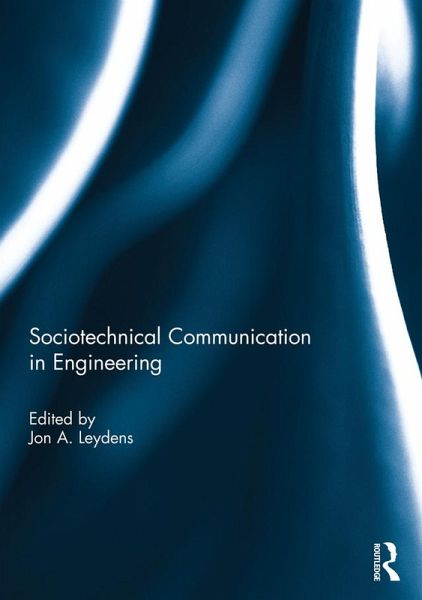
Sociotechnical Communication in Engineering (eBook, ePUB)
Versandkostenfrei!
Sofort per Download lieferbar
39,95 €
inkl. MwSt.
Weitere Ausgaben:

PAYBACK Punkte
20 °P sammeln!
This collection explores why engineering communication constitutes sociotechnical communication. Sociotechnical communication acknowledges that engineering communication occurs not in a vacuum but shapes and is shaped by multiple social forces. Through diverse research cases, the authors show how sociotechnical communication disrupts common myths in engineering communication: the myth that communication can be purely technical and neutral, and that data speak for themselves.The book highlights these myths, considering first how styles, types, and means of sociotechnical communication played pi...
This collection explores why engineering communication constitutes sociotechnical communication. Sociotechnical communication acknowledges that engineering communication occurs not in a vacuum but shapes and is shaped by multiple social forces. Through diverse research cases, the authors show how sociotechnical communication disrupts common myths in engineering communication: the myth that communication can be purely technical and neutral, and that data speak for themselves.
The book highlights these myths, considering first how styles, types, and means of sociotechnical communication played pivotal-and differing-roles in the evolution of wind power technology in Denmark and Germany. The role of myth in engineering blogs in also examined, wherein the effect of engineers maintaining "objective" or "neutral" personae, accentuating technical facts over their social relevance, and eschewing controversy, is to decrease public interest in engineering issues. We see the myths emerge again via product development engineers, whose narrow technical roles constrain their identities and may contribute to constraining their design innovation capacities, in contrast to more holistic, flexible spaces that foster innovation. The myths are also apparent in constructing bridges across Millennial-Baby Boomer generational divides, to facilitate engineering collaboration and knowledge transfer among engineers. Finally, the myths are situated in light of related myths and broader research trends in engineering communication.
This book was originally published as a special issue of Engineering Studies.
The book highlights these myths, considering first how styles, types, and means of sociotechnical communication played pivotal-and differing-roles in the evolution of wind power technology in Denmark and Germany. The role of myth in engineering blogs in also examined, wherein the effect of engineers maintaining "objective" or "neutral" personae, accentuating technical facts over their social relevance, and eschewing controversy, is to decrease public interest in engineering issues. We see the myths emerge again via product development engineers, whose narrow technical roles constrain their identities and may contribute to constraining their design innovation capacities, in contrast to more holistic, flexible spaces that foster innovation. The myths are also apparent in constructing bridges across Millennial-Baby Boomer generational divides, to facilitate engineering collaboration and knowledge transfer among engineers. Finally, the myths are situated in light of related myths and broader research trends in engineering communication.
This book was originally published as a special issue of Engineering Studies.
Dieser Download kann aus rechtlichen Gründen nur mit Rechnungsadresse in A, B, BG, CY, CZ, D, DK, EW, E, FIN, F, GR, HR, H, IRL, I, LT, L, LR, M, NL, PL, P, R, S, SLO, SK ausgeliefert werden.













